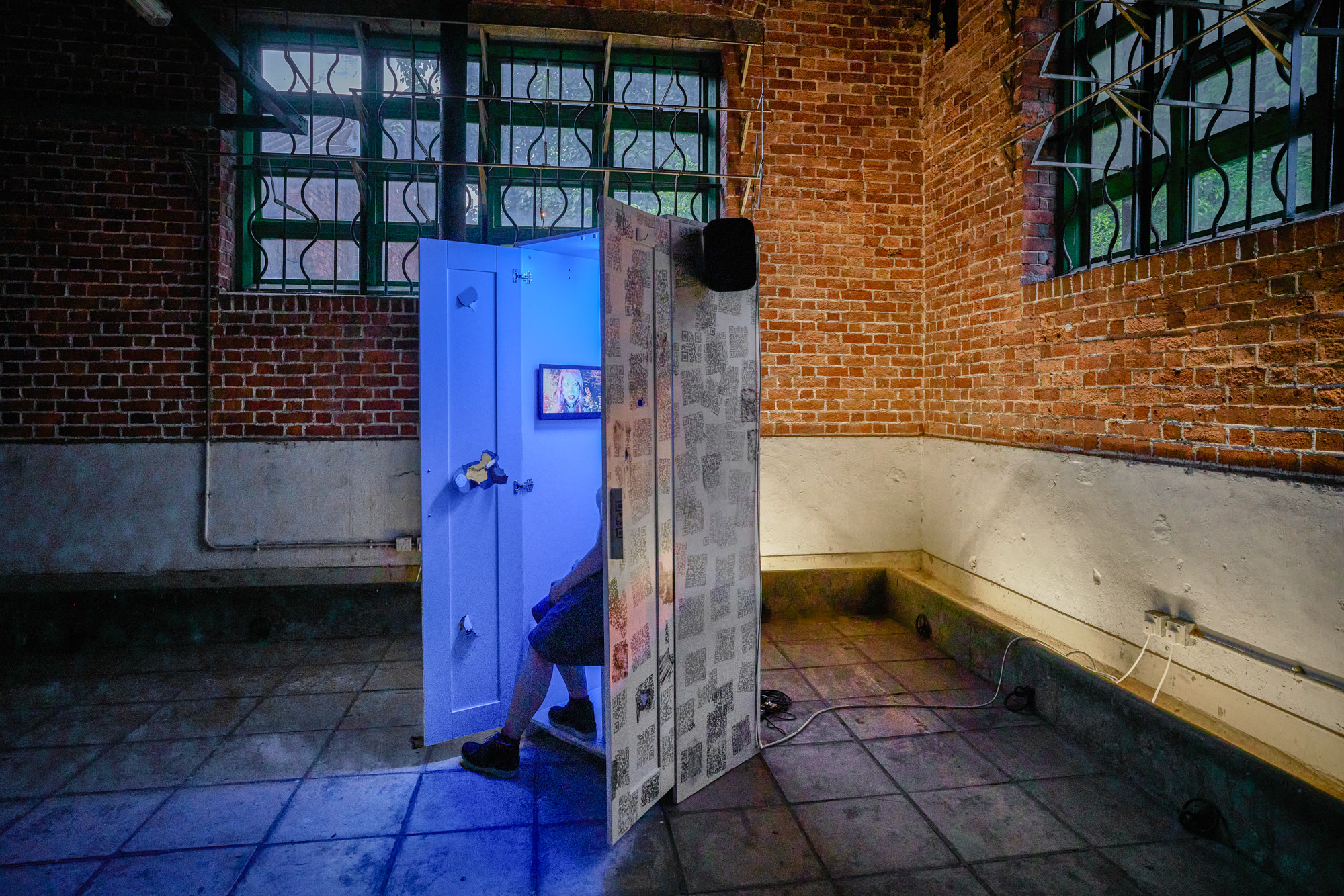Shows
Who is Cyborg? Examining “Post-Human Narratives”


In A Cyborg Manifesto (1985), theorist Donna Haraway declares that “we are cyborgs.” As technology is increasingly enmeshed in our daily lives, it is becoming difficult to draw a line neatly between human and machine. From optimizing our bodies to acquiring social avatars for the digital space, we have become post-human, networks of flesh, steel, and silicone where everything can be remade. Curated by Kobe Ko, the group show “Post-human Narratives – The Co-existing Land” takes its name from this idea, and follows Haraway’s feminist rejection of the “inherent” to break down fundamental assumptions about nature, bodies, and our identities as unfragmented and self-enclosed.
Set in a dimly lit warehouse at Hong Kong’s Cattle Depot, the nine works entered the idea of the post-human from different points. Dressed in white, Ice Wong sits among sunflowers dotted on islands of white stone in the performance The Interweaving of You and I (2021). Wong and the plants are mutually dependent for care and comfort—the carbon dioxide that the artist exhales is converted by the sunflowers into oxygen, which is inhaled again by Wong in an endless cycle that dispels the idea that either are distinct entities. This symbiotic relationship is echoed in Mayumi Hosokura’s Digitalis (2021), a series of three videos that slot more cleanly into the technological concerns of Haraway’s theory. In the work, Hosokura highlights the camera as not an objective external device but a subjective mechanical eye. Using the camera’s zoom, she sets up a proto-human-camera assemblage, integrating her vision with that of the device to see a hand's details, which she wouldn’t otherwise be able to register.


Betty Apple’s video Let me fix you (2021) leans into glitch, marring both screen and audio to evoke fragmented identity. Styled as a time-traveling cyborg-mermaid, Apple’s pink-haired persona explains that she’s a consciousness grafted onto a computer interface, able to travel through time along a network that’s neither permanent nor real. The constructed post-human persona suggests “nature” is no longer a relevant category, and the possibilities of what or who we could be become endless. A Corner of Alternative History: Genetic Salon and Her Enemy (2021) underscores similar issues about identity construction. Framing her work as an archeological discovery, Bobby Yu Shuk-pui lays out brushes and torches in an invitation for the viewer to dig up the past. Yet the newspapers that are buried detail events from a future that has not yet occurred. In this reality, genes are not inherent but purchasable goods on the free market, and ads promise the reader that buying the DNA of Barack Obama or Taylor Swift will endow them with their “superior” characteristics. Arguably, Haraway’s spirit is strongest here. In jamming the flow of linear time, Yu not only asks if gene editing changes what artificiality means, but whether we, so focused on plastic surgery and the all-around optimization of our bodies, are already, in fact, fake.
Yet there were also pieces that diverged significantly from the show’s inspiration. Florence Lam’s performance Heaven Spot (2021), for instance, is concerned with the way humans record history. On a set that resembles a post-apocalyptic wasteland, the artist carves grooves into abandoned car-parts. Comparing this act with the creation of cave-paintings, Lam reflects on the beauty and futility of our immortality project, the need to leave marks on the world to prove we were once here. Meanwhile, Contract for Co-existence (2021) functioned as a chilling depiction of dystopian bureaucracy. Ho Sin Tung choreographs two actors signing a series of marriage paperwork, each consenting to the other “failing,” “sleeping,” or “laughing” before them. Though both works are rich on their own, in leaning toward speculative fiction, they presented a technofuturist warning and stopped short of using it to destabilize the fatalistic and innate, leaving me wanting for new ways of being.
Instead of an anchor that grounded the whole show, Haraway’s notion of post-humanism functioned as a starting point for works that spoke to the artists’ own visions of the cyberfuturist world. “Post-human Narratives” was most convincing when understood as one particular node contributing to a vast network of artistic explorations concerning cyborgian existence—a tasting menu of the future rather than a fully self-contained and homogenous vision.
"Post-human Narratives – The Co-existing Land" was on view at Cattle Depot Artist Village, Hong Kong, from July 31 until September 5, 2021.
Suining Sim is an editorial intern at ArtAsiaPacific.







